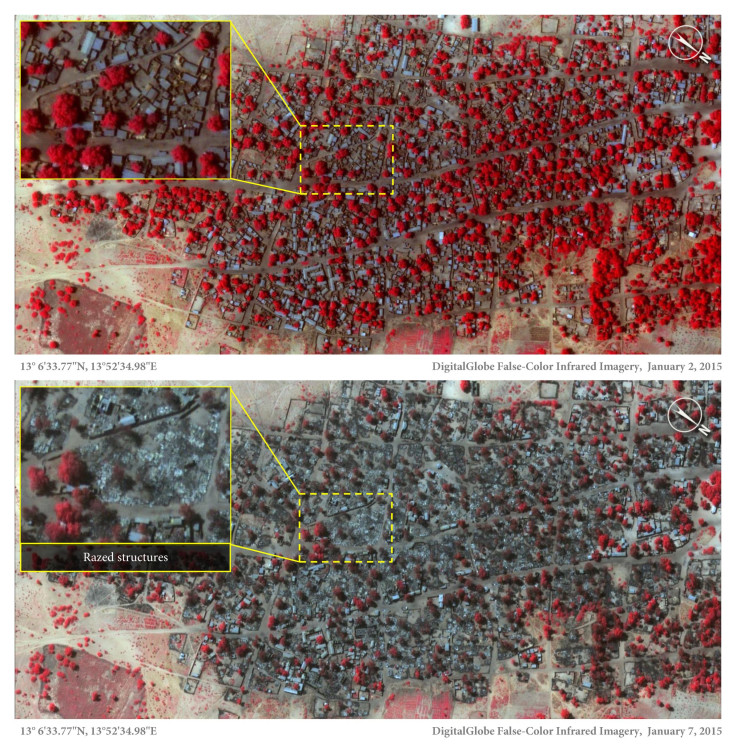Boko Haram Attacks In Nigeria: Satellite Images Show Evidence Of Deadliest Attack Yet

New satellite images from Amnesty International help quantify the “devastation of catastrophic proportions” that occurred when Boko Haram militants killed more than 2,000 people in the towns of Baga and Doron Baga just under a week ago.
“Of all Boko Haram assaults analysed by Amnesty International, this is the largest and most destructive yet,” Daniel Eyre, Nigeria researcher for Amnesty International, said in a statement Thursday. “It represents a deliberate attack on civilians whose homes, clinics and schools are now burnt-out ruins.”
The attack is thought to be the group’s deadliest ever, with reported death tolls above 2,000 people. Though this number has been questioned by many, including the Nigerian government, which previously put the death toll at just 150 people, the images help provide more accurate evidence as to what actually happened in Baga.
“While survivor accounts may be confused or conflated, I find the higher numbers reported by local officials more credible, especially now that we have the satellite imagery,” said Peter Pham, director of the Africa Center at the Atlantic Council.
While it’s difficult to know the number of people killed, the satellite images taken a week apart show that more than 3,700 structures were damaged or destroyed by Boko Haram.
“They killed so many people. I saw maybe around 100 killed at that time in Baga,” one witness told Amnesty. “I ran to the bush. As we were running, they were shooting and killing.” Others say the group members were shooting “indiscriminately,” and even killed a woman who was in labor.
This incident has also become the center of a debate about international attention, as media outlets and global activists focused on Paris, where masked gunmen killed 17 people during three days of chaos that started at the headquarters of satirical magazine Charlie Hebdo.
Just days after the incident, Boko Haram’s leader, Abubakar Shekau, released a video expressing support for the terrorists who carried out the attacks in France.
The militant Islamist group, whose name translates roughly to “Western education is forbidden,” has been carrying out increasingly violent attacks in northern Nigeria since 2009, but has been in the spotlight over the past year after members kidnapped more than 200 girls from the town of Chibok. Despite a trending hashtag and pledges of support from the international community, the girls have yet to be found.
In addition to these large-scale kidnappings, the group has also been carrying out more violent attacks. The group has reportedly strapped explosives to young girls to carry out attacks in other towns around northern Nigeria.
The violence is only likely to get worse as Nigeria prepares to vote for a new president on Feb. 14. While elections are always a tense time for the country, analysts fear that this year could be worse than usual, as Boko Haram takes advantage of instability. “We do believe the election is a factor,” the U.S. State Department said on Tuesday, noting the “sharp escalation” in reported casualties.
© Copyright IBTimes 2024. All rights reserved.






















